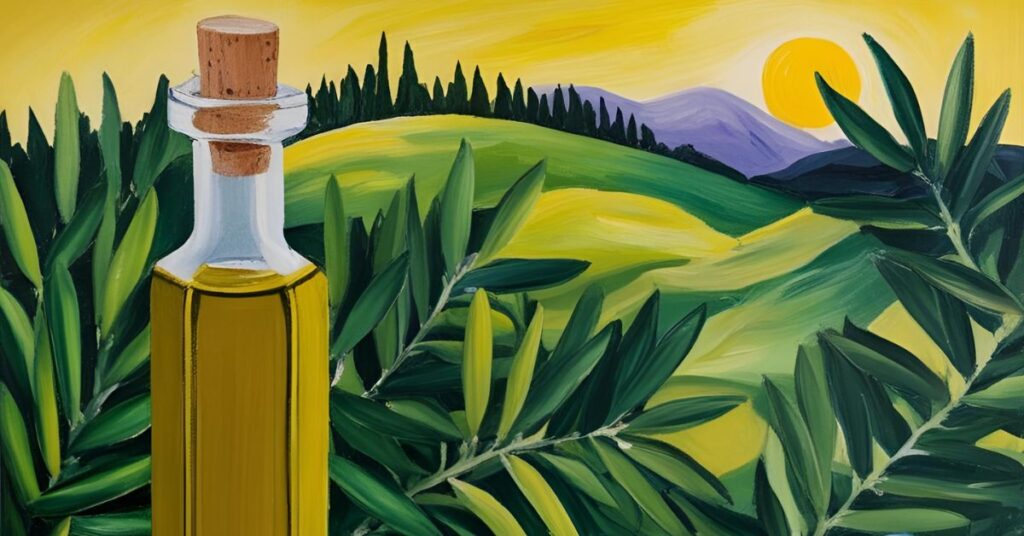
Olive Oil in Art

Olive Oil in Art Through the Ages
When we think of olive oil, the first associations are often culinary—drizzling over salads, enriching stews, or dipping fresh bread. Yet this golden elixir has also had a surprisingly rich and enduring presence in the world of art. Beyond the kitchen and the table, olive oil has inspired, supported, and even served as a medium in artistic expression for thousands of years. From ancient rituals to Renaissance paintings, its influence is as deep and multi-faceted as the oil itself.
A Symbol of the Sacred and the Sublime
In ancient civilizations, olive oil was more than a dietary staple—it was a symbol of life, purity, and divinity. The Greeks believed the olive tree was a gift from Athena, and they used olive oil in religious rituals, anointing ceremonies, and even as fuel for sacred lamps. This spiritual significance found its way into art, where olive branches and oil-filled vessels became symbols of peace, sanctity, and endurance.
Many classical artworks, frescoes, and pottery depict scenes involving olive oil, from its harvest to its ceremonial use. These depictions offer more than aesthetic pleasure—they are visual narratives that underscore the oil’s central role in ancient life and belief.
Olive Oil as Medium: A Painter’s Tool
Perhaps less well known is olive oil’s functional role in the creation of art. In the early stages of oil painting—before linseed oil became the standard—artists sometimes used olive oil as a binder for pigments. While it dried more slowly and yellowed over time compared to linseed, it was accessible and familiar, especially in Mediterranean regions.
Additionally, artists have used olive oil for cleaning and conditioning their brushes and tools. Its gentle, non-toxic properties made it a safer alternative to harsher chemicals, and some traditional painters still turn to it today for studio maintenance and brush care.
Renaissance Reverence and Beyond
During the Renaissance, olive oil appeared in art not just as a medium but as a meaningful symbol. Bottles and bowls of olive oil were painted into still lifes as signs of domestic abundance, health, and refinement. These works celebrated everyday objects with reverence, elevating the ordinary to the level of the eternal.
Artists like Caravaggio, known for their dramatic lighting and realism, sometimes included olive oil lamps in their scenes to create the soft, glowing ambience that defined their work. In these paintings, olive oil became both a literal source of light and a metaphorical one.
Contemporary Interpretations
Modern and contemporary artists continue to explore olive oil’s artistic potential. Some use it in performance and installation art, exploring themes like heritage, sustainability, and body politics. Olive oil’s unique texture and golden hue offer sensory and symbolic layers that artists find compelling.
For example, Greek and Middle Eastern contemporary artists have used olive oil in video art or conceptual installations to comment on cultural identity, the legacy of colonization, and the ongoing significance of land and agriculture.
Conclusion: A Living Legacy
From sacred rituals to studio palettes, olive oil has played a diverse and evolving role in art history. It’s more than just a muse—it’s a medium, a message, and a material all in one. Its golden glow continues to shine not only on our plates, but in our galleries, museums, and cultural memory.
As we swirl it on a canvas or a salad, perhaps we should pause and appreciate olive oil not just for its flavor, but for its artistry. In every drop lies a story—of history, humanity, and creativity.